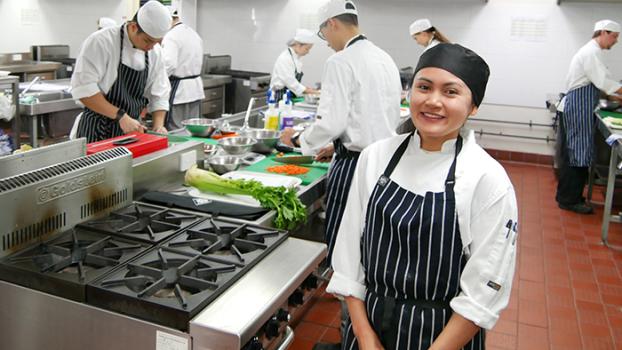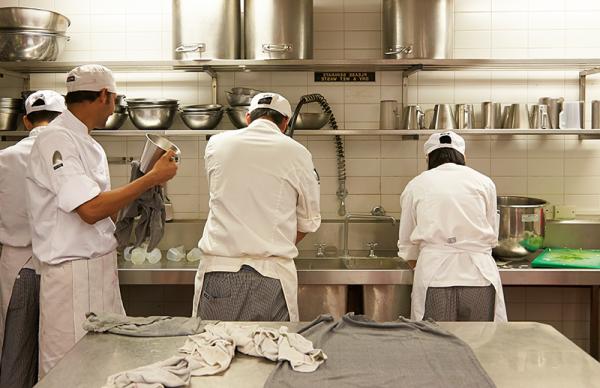
Kitchenhand
Kitchenhands assists cooks or chefs within a working kitchen. They wash, peel and prepare foodstuffs and help to prepare simple dishes. They wash and clean utensils, dishes and benches that are used in the kitchen. They may also sort and store food stuffs, dispose of rubbish, organise the laundering of linen and clean various food preparation equipment and floors.
Working conditions
A kitchenhand's job can be very stressful, especially during peak periods. Kitchenhands are generally required to work shifts, and may be required to work shiftwork, and weekends and public holidays. Normal hours are 38 hours per week. Kitchenhands usually need to stand for most of the working day and kitchens can be hot and humid. Turnover in this occupation is high.
Tools and technologies
Kitchenhands need to be proficient with knives and other kitchen equipment. They may also need to use large commercial dishwashing machines.
Education and training
You can work as a kitchenhand without any formal qualifications and get training on the job. However, entry into this occupation may be improved by obtaining a qualification in hospitality.
The Certificates I and II in Hospitality and Certificate II in Kitchen Operations are offered at TAFE colleges and other registered training organisations throughout Western Australia.
Browse courses through Jobs and Skills WA and search on the My Skills website to find a registered provider near you.
You can also undertake a traineeship in hospitality (catering operations) (level 2). The traineeship takes nine months to complete and is available as a school-based traineeship.

Free support and assistance
Your local jobs and Skills Centre can provide free information, support and assistance to help you decide on the best training options to meet your goals.
Disclaimer
The information presented on the occupation profiles within this website is offered as a guide only.


